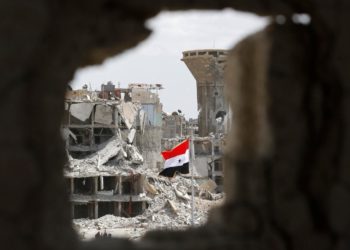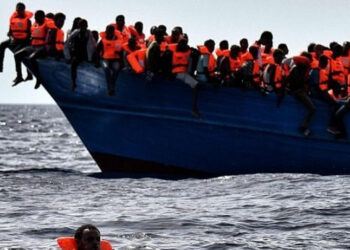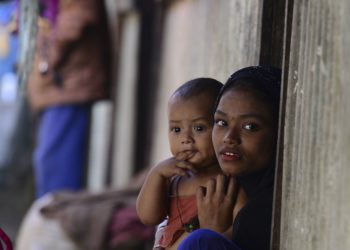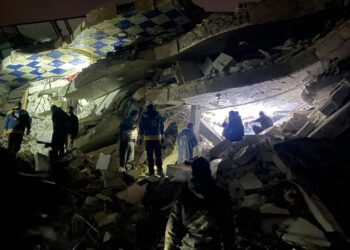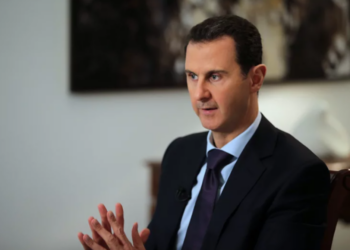After fleeing regime bombardment on southern Syria, Ayman al-Homsi and his pregnant wife saw their escape come to an abrupt halt in a parched field near the closed Jordanian border.
With nowhere else to go, they and dozens of other families have set up camp in the dry grass on the edge of Daraa province, just a dozen metres (yards) away from the frontier.
“If a woman has to give birth now, where are we supposed to take her? We have nothing here to help her,” said 25-year-old Homsi. “There aren’t even the basics. There’s no water, no food, nothing to protect people from the sun.”
Some 270,000 people have fled a two-week regime offensive on rebels in the Syria’s southern province of Daraa bordering Jordan, the United Nations says. They include an estimated 70,000 who headed south to the Jordanian frontier — only to find it closed.
“We only just managed to save ourselves from the rubble, with our women and children,” Homsi said.
The young man — now twice displaced after he fled the central province of Homs earlier in Syria’s seven-year war — had hoped to find shelter in neighbouring Jordan. But Amman has said its frontier, which has been closed since 2016, will remain so to any more Syrians fleeing the conflict.
Jordan hosts 650,000 Syrian refugees registered with the United Nations, but says the true figure is close to double that.
Russian-Syrian forces are attacking civilians in Syria's southwestern Daraa province. Israel sends humanitarian aid but, like Jordan, isn't letting in refugees trying to escape for their lives. https://t.co/xiQYRoSuva pic.twitter.com/UEm101UlUG
— Kenneth Roth (@KenRoth) June 30, 2018
‘Stale Bread’
“We ask that people be able to enter Jordan for the safety of the women and the children,” Homsi said.
More than 350,000 people have been killed and millions displaced by Syria’s civil war since it started in 2011 with a brutal crackdown on anti-government protests.
At the impromptu camp near the Jordanian border, fleeing families now live in their vehicles or under canvas set up in haste. Border guards watch on from the top of a hill, while women and small children sit in the shade outside a tent in the plain below.
One family has set up camp in a mini-van, its doors swung open to let air in and stave off the mid-summer heat. Another appears to be living out of a refrigeration truck.
“There are pregnant women and elderly women with us. We have old people and children,” says Homsi. “If a woman needs to go to the bathroom, there’s no bathroom.”
In a statement, Amnesty International urged Jordan to reopen its border which it said was the “only gateway to safety” for the stranded civilians.
“Daraa residents are effectively trapped — many of those who are displaced are living in makeshift tents in the searing heat with insufficient food, water or medical care, and with the constant fear of being exposed to attacks at any given point,” said Lynn Maalouf, Amnesty’s Middle East research director
Amina al-Khazaela, a Jordanian woman who lived in the Daraa countryside after marrying a Syrian, begged Jordan for help.
“We have no homes, no doors for shelter. We’re staying on the ground,” said the 48-year-old, who lost a son in the recent violence. “There’s no water for us to wash our faces or hands. We’ve been searching all over for food. We’re eating stale bread. We break stale bread and eat it.”



